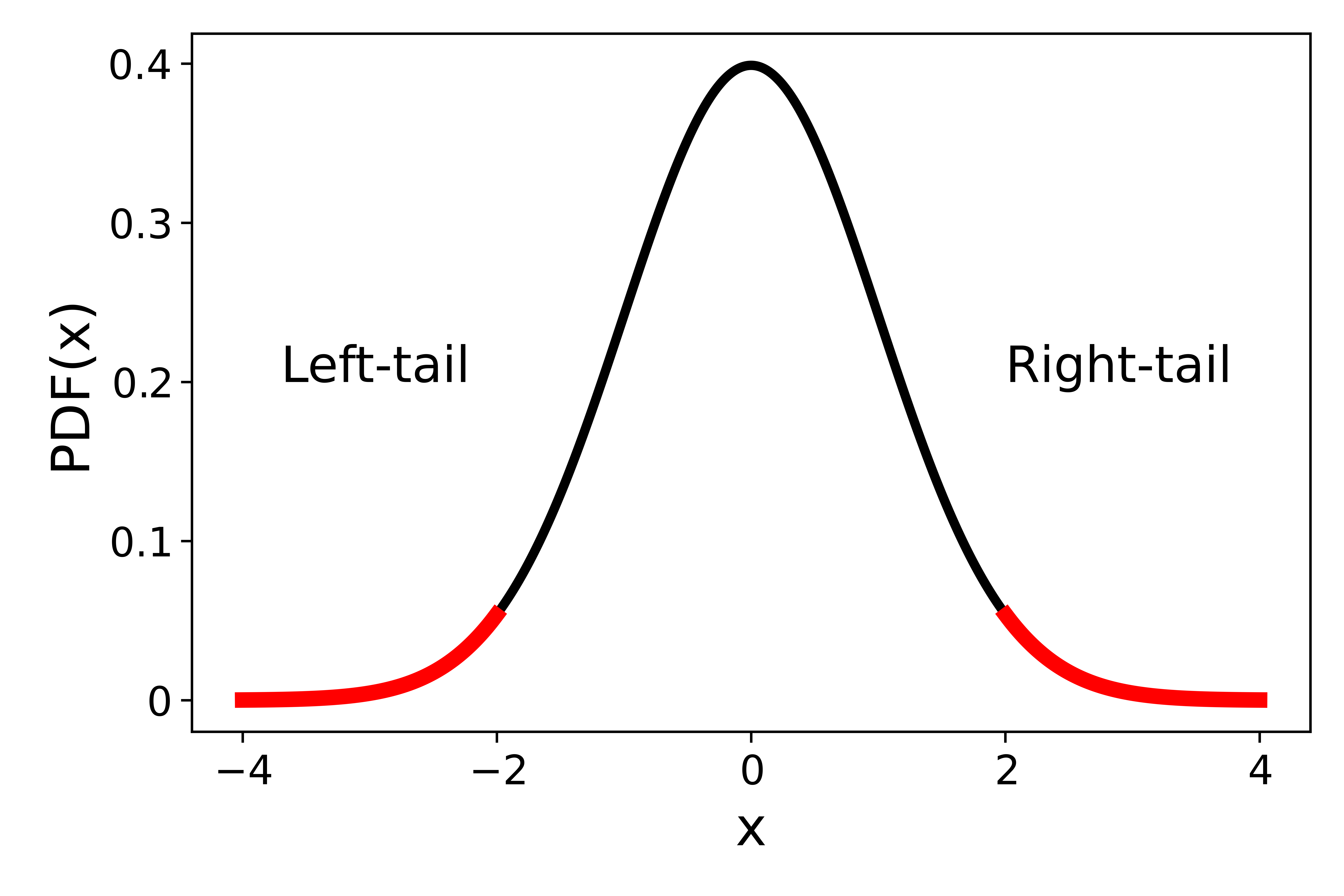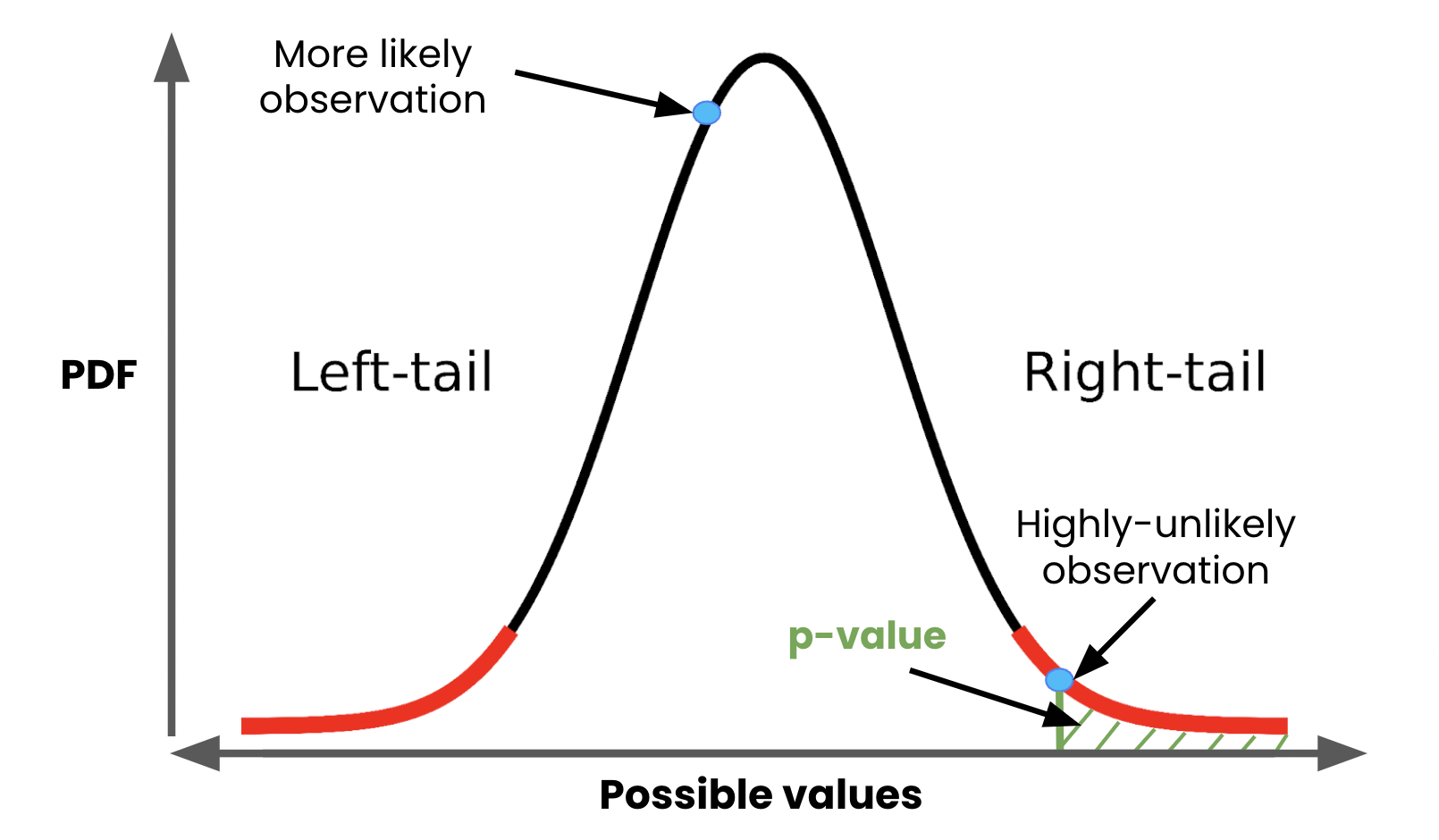p-values
Hypothesis Testing in Python

James Chapman
Curriculum Manager, DataCamp
Criminal trials
- Two possible true states:
- Defendant committed the crime
- Defendant did not commit the crime
- Two possible verdicts:
- Guilty
- Not guilty
- Initially the defendant is assumed to be not guilty
- Prosecution must present evidence "beyond reasonable doubt" for a guilty verdict
Age of first programming experience
age_first_code_cutclassifies when Stack Overflow user first started programming"adult"means they started at 14 or older"child"means they started before 14
- Previous research: 35% of software developers started programming as children
- Evidence that a greater proportion of data scientists starting programming as children?
Definitions
A hypothesis is a statement about an unknown population parameter
A hypothesis test is a test of two competing hypotheses
The null hypothesis ($H_{0}$) is the existing idea
The alternative hypothesis ($H_{A}$) is the new "challenger" idea of the researcher
For our problem:
- $H_{0}$: The proportion of data scientists starting programming as children is 35%
- $H_{A}$: The proportion of data scientists starting programming as children is greater than 35%
1 "Naught" is British English for "zero". For historical reasons, "H-naught" is the international convention for pronouncing the null hypothesis.
Criminal trials vs. hypothesis testing
- Either $H_{A}$ or $H_{0}$ is true (not both)
- Initially, $H_{0}$ is assumed to be true
- The test ends in either "reject $H_{0}$" or "fail to reject $H_{0}$"
- If the evidence from the sample is "significant" that $H_{A}$ is true, reject $H_{0}$, else choose $H_{0}$
Significance level is "beyond a reasonable doubt" for hypothesis testing
One-tailed and two-tailed tests

Hypothesis tests check if the sample statistics lie in the tails of the null distribution
| Test | Tails |
|---|---|
| alternative different from null | two-tailed |
| alternative greater than null | right-tailed |
| alternative less than null | left-tailed |
$H_{A}$: The proportion of data scientists starting programming as children is greater than 35%
This is a right-tailed test
p-values

p-values: probability of obtaining a result, assuming the null hypothesis is true
- Large p-value, large support for $H_{0}$
- Statistic likely not in the tail of the null distribution
- Small p-value, strong evidence against $H_{0}$
- Statistic likely in the tail of the null distribution
- "p" in p-value → probability
- "small" means "close to zero"
Calculating the z-score
prop_child_samp = (stack_overflow['age_first_code_cut'] == "child").mean()
0.39141972578505085
prop_child_hyp = 0.35
std_error = np.std(first_code_boot_distn, ddof=1)
0.010351057228878566
z_score = (prop_child_samp - prop_child_hyp) / std_error
4.001497129152506
Calculating the p-value
norm.cdf()is normal CDF fromscipy.stats.- Left-tailed test → use
norm.cdf(). - Right-tailed test → use
1 - norm.cdf().
from scipy.stats import norm
1 - norm.cdf(z_score, loc=0, scale=1)
3.1471479512323874e-05
Let's practice!
Hypothesis Testing in Python

